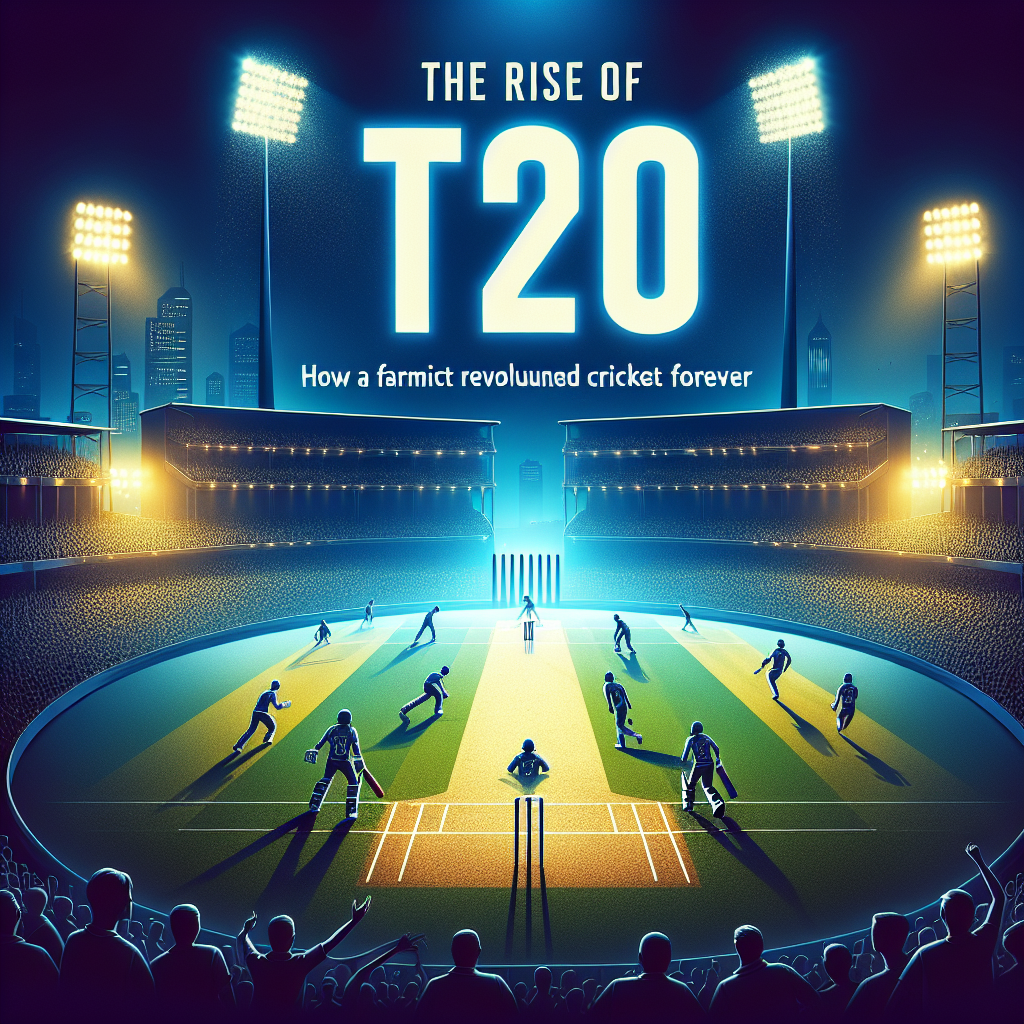The Rise of T20: How a Format Revolutionized Cricket Forever
Cricket, a sport that has evolved over centuries, saw a seismic shift in its landscape with the introduction of T20 (Twenty20) cricket in the early 2000s. This shorter format, characterized by its fast-paced action and explosive gameplay, has fundamentally transformed the way the game is played, perceived, and marketed. The rise of T20 cricket not only rejuvenated fan interest but also gave birth to new avenues for players, leagues, and the global cricketing economy.
The Genesis of T20 Cricket
The inception of T20 cricket can be traced back to the 2003 English County season when the England and Wales Cricket Board (ECB) launched a new format aimed at making the game more exciting for fans. The concept was simple: each team would face a maximum of 20 overs, and matches were designed to be completed in approximately three hours. The format quickly gained traction and the inaugural T20 World Cup was held in 2007, immediately heralding the arrival of a new era.
The Impact on Traditional Formats
Before T20, cricket was predominantly played in two formats: Test cricket and One Day Internationals (ODIs). While Test matches are revered for their tradition and strategic depth, and ODIs have long provided a balance between stamina and skill, T20 cricket introduced a refreshing dynamism. Matches now demand explosive batting, acrobatic fielding, and strategic bowling, all in a condensed timeframe.
With the rise of T20, international teams began to adapt their strategies to accommodate this new format. Players honed their skills to master hitting boundaries, quick singles, and innovative shot-making, leading to a noticeable shift in the nature of the game. Traditional techniques were replaced with aggressive batting styles and innovative bowling strategies, significantly altering training regimens and skill development at the grassroots level.
Popular Leagues and Global Reach
The launch of domestic leagues like the Indian Premier League (IPL) in 2008 marked a transformational moment for T20 cricket. The IPL not only attracted the best players from around the globe but also became a lucrative platform for franchises, resulting in substantial financial investments and sponsorship deals. Other leagues followed suit, such as Australia’s Big Bash League (BBL), the Pakistan Super League (PSL), and the Caribbean Premier League (CPL), expanding T20’s global footprint further.
These leagues have stimulated local economies, enticing tourism and generating substantial revenues for broadcasting companies. The franchise model allowed players to earn significant salaries, with some players becoming millionaires overnight. The competitive nature of these leagues has also prompted young cricketers to aspire for T20 glory, significantly boosting participation rates among aspiring players globally.
The Cultural Phenomenon
T20 cricket has morphed into more than just a format; it has become a cultural phenomenon. The vibrant atmosphere at T20 matches—complete with music, cheerleaders, and fan engagement—has attracted a younger audience, who embrace the sport through a modern lens. This has been pivotal in drawing in diverse demographics, particularly in non-traditional cricketing nations.
Moreover, the advent of social media has transformed how fans engage with the game. Highlight reels, memes, and player interactions create a more immersive experience, enabling fans to follow their favorite players and teams beyond the confines of traditional media.
The Future of T20 Cricket
As T20 continues to gain momentum, its influence on the international game raises questions about the future of traditional formats. While the purists may cling to Test cricket, the undeniable reality is that T20 has successfully captured the imagination of a new generation. Cricket boards are now investing in women’s T20 leagues, enhancing gender equity and empowering female athletes to thrive in the sport.
Consequently, the future of T20 appears bright, with innovations in gameplay, technology, and fan engagement promising to maintain its relevance. The excitement surrounding the format remains palpable, illustrating that while cricket may have deep-rooted traditions, its capacity for evolution is equally robust.
Conclusion
In a relatively short span, T20 cricket has not only revolutionized how the game is played but has also transformed its global stature, engaging new audiences and creating myriad opportunities for players and stakeholders alike. As the landscape of cricket continues to evolve, the rise of T20 stands as a testament to the sport’s adaptability—forever altering its rhythm, energy, and cultural significance.

